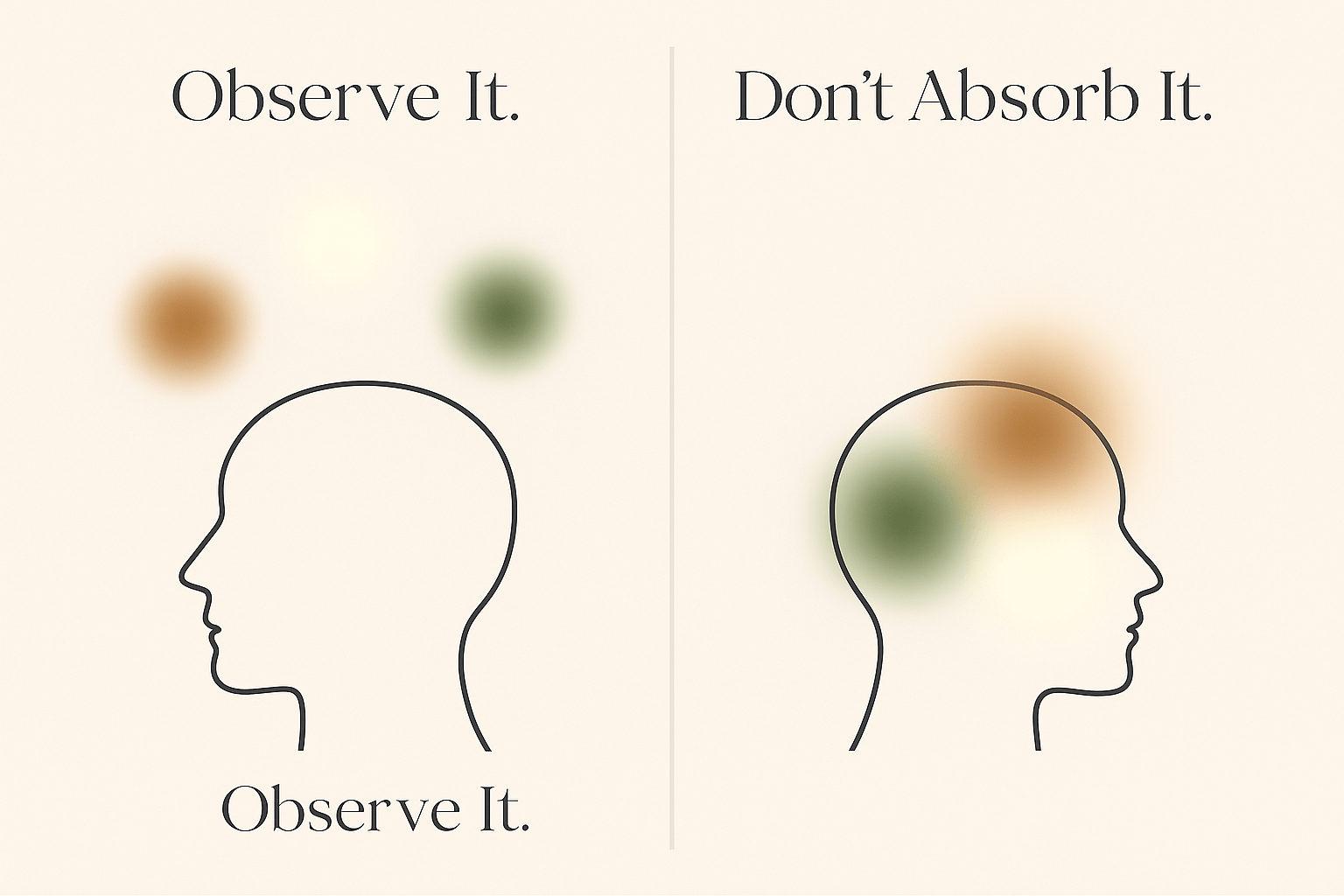The Power of Habit Stacking: How to Create Lasting Change
Have you ever wondered why it’s so difficult to start a new healthy routine from scratch like fitting in a quick workout before heading to the office or remembering to prepare a wholesome lunch for the next day? Habit stacking techniques may be your answer. By deliberately “stacking” a new habit onto an existing one, you create a chain of behaviours that’s far more likely to stick. This approach can be especially helpful for busy UK professionals who juggle hectic schedules and often feel they lack the time to implement better health habits.
In this article, we’ll explore the science behind habit stacking, relate it to our everyday experiences of stress and convenience-driven decision-making, and offer tried-and-tested methods for creating lasting change. We’ll also touch on how cognitive biases can affect our food and health choices, referencing fascinating research into how modifying these biases can help us adopt more sustainable routines.
Why This Topic Matters
The Busy Professional’s Dilemma
For many urban professionals imagine someone dashing to catch the 8 am train from Manchester to central London—adding brand-new habits to an already full schedule can feel impossible. Life is busy, and every spare moment may already be accounted for. One proven way to ease the transition to healthier living is to piggyback your desired behaviour changes onto existing routines, such as preparing your morning coffee, commuting, or winding down in the evening.
The Science of Habit Formation
Habits form when a behaviour becomes automatic. According to a variety of behavioural psychology sources, including, once our brain connects a trigger (e.g., finishing breakfast) to a behaviour (e.g., taking vitamins), it requires less conscious effort to maintain that routine. Incorporating new health habits like mindful eating or a short stretch session into your day can reduce reliance on raw willpower.
Cognitive Bias and Food Choices
Our immediate impulses often influence what we eat—especially under stress. Pressing deadlines or back-to-back Zoom meetings might steer you to grab a quick biscuit from the office kitchen. But a 2019 study titled “Unhealthy yet Avoidable: How Cognitive Bias Modification Influences Food Choice” highlights that cognitive biases can potentially be retrained to reduce unhealthy patterns. By combining habit stacking with small shifts in perspective like viewing a bowl of fruit as just as convenient as a chocolate bar you can gradually reshape your daily choices.
Common Mistakes or Misconceptions
Try to Overhaul Everything at Once
People often launch into an all-or-nothing approach—cutting out entire food groups or committing to daily hour-long workouts right away. This requires significant discipline and willpower, making it more likely you’ll experience burnout or slip-ups. As noted by research on behaviour change from, people tend to feel overwhelmed when taking on too many changes at once, which fosters an “all-or-nothing” mentality: “If I fail once, I can’t do it at all.” The problem? This narrow view undermines incremental progress and sets you up for discouragement.
Rely Solely on Motivation
Motivation is a powerful kick-starter but notoriously inconsistent. According to quenza, motivation naturally fluctuates based on energy levels, emotional states, and external stressors. If your plan depends entirely on motivation especially in a stressful environment or when fatigue hits your routine can quickly unravel.
Ignore the Role of Existing Routines
Attempting to force a new habit into an already jam-packed day without integrating it into what you’re already doing is a common mistake. For instance, telling yourself you’ll add a 20-minute mindfulness session “at some point” in your day doesn’t give you a clear, reliable anchor. Instead, attaching that new habit to a well-established routine like right after you brush your teeth makes it far more likely you’ll remember and follow through.
Fail to Consider Internal Biases
We often underestimate how our own thought patterns—like emotional hunger, time-constraint bias, or even the comfort of the status quo—drive our choices. According to thedecisionlab, status quo bias can make us resistant to change simply because we’re already accustomed to our current routines. Additionally, factors like confirmation bias can lead us to favour information that supports our unhealthy habits, making it harder to break them.
Aim for Rapid Results without Reflection in
A lack of self-monitoring (such as journaling your meals, moods, or progress) can undermine long-term success, since you won’t have any data on what is and isn’t working. As noted by psychologytoday.com, real change needs consistent positive reinforcement, reflections on progress, and time to evolve. When we push for radical, rapid results, we often miss the opportunity to identify underlying triggers or celebrate small wins that lay the foundation for lasting behaviours.
Overlooking Emotional and Psychological Factors
While frameworks like “Atomic Habits” are popular for their systematic approach, critics point out that a purely mechanistic method can overlook the deep emotionality of behaviour change such as stress, anxiety, or a lack of confidence. Emotions can trigger cravings or sabotage well-intentioned plans. Failing to address these emotional drivers can keep new habits from taking root.
In summary, by recognising these pitfalls, you can avoid self-criticism and instead focus on gradual, proven approaches for lasting change. Drop the all-or-nothing mindset, pair new habits with existing routines, keep an eye on your internal biases, and embrace practice and reflection over quick fixes.
Behavioural Solutions & Strategies
Below are three actionable strategies you can start using straightaway to harness the power of habit stacking techniques:
Start Tiny with “Trigger” Cues
Pick a tiny version of your new behaviour and attach it to a routine you already do daily. For instance:
Habit Stacking Example 1: If you want to start a short mindfulness practice, stack it onto your morning tea ritual. Right after switching on the kettle, take three mindful breaths.
Habit Stacking Example 2: If you’d like to stay hydrated, keep a reusable water bottle on your desk. Every time you hang up from a Zoom call, take a few sips.
These small but consistent wins rewire your brain to expect the new habit alongside the existing one.
Use Positive Reinforcement
After completing your habit stack, celebrate it. Positive reinforcement—like mentally congratulating yourself or ticking off a daily goal—builds confidence and a sense of reward. Acknowledging small accomplishments strengthens your commitment.
Tool Tip: “Food-Mood Journalling” can help monitor your emotional responses to each habit. This mindful tracking can highlight patterns in your day.
Reframe Biases and Self-Talk
Cognitive biases can sabotage even well-planned habits perhaps telling you it’s “too hard” or that “I never have time.” Recognise this self-talk, and replace it with a more balanced mindset. If you catch yourself craving sweets mid-afternoon, consider if you’re dehydrated or simply need a break rather than a chocolate bar.
Real-Life Example (Case Study)
Meet Sarah, a 42-year-old communications manager from Birmingham:
Struggle: Long hours, frequent meetings, and a tendency to skip lunch. By 3pm, she’s starving—often grabbing whatever crisps or sweets are on hand.
Goal: Increase healthy eating and reduce midday energy slumps.
Solution:
Sarah decides to stack a new habit having a nutritious lunch onto her existing routine of writing her daily to-do list each morning.
Right after she finishes that list, she allocates five minutes for a quick lunch prep or schedules a break in her calendar to eat mindfully.
She uses a positive reinforcement method: each time she completes her mindful lunch break, she logs it in a habit tracker app and gives herself a quick “Good job!”
Outcome: Within a month, creating a quick lunch plan becomes second nature. She experiences fewer sugar cravings in the afternoon, feels more energetic, and is proud of her consistency.
Final Words
Stacking new habits on top of existing ones is a gentle but powerful way to integrate healthy behaviours into your busy calendar whether you’re in Manchester, London, or elsewhere in the UK. By starting small, reinforcing each success, and recognising cognitive biases that might sabotage your efforts, you’ll create positive changes that endure.



